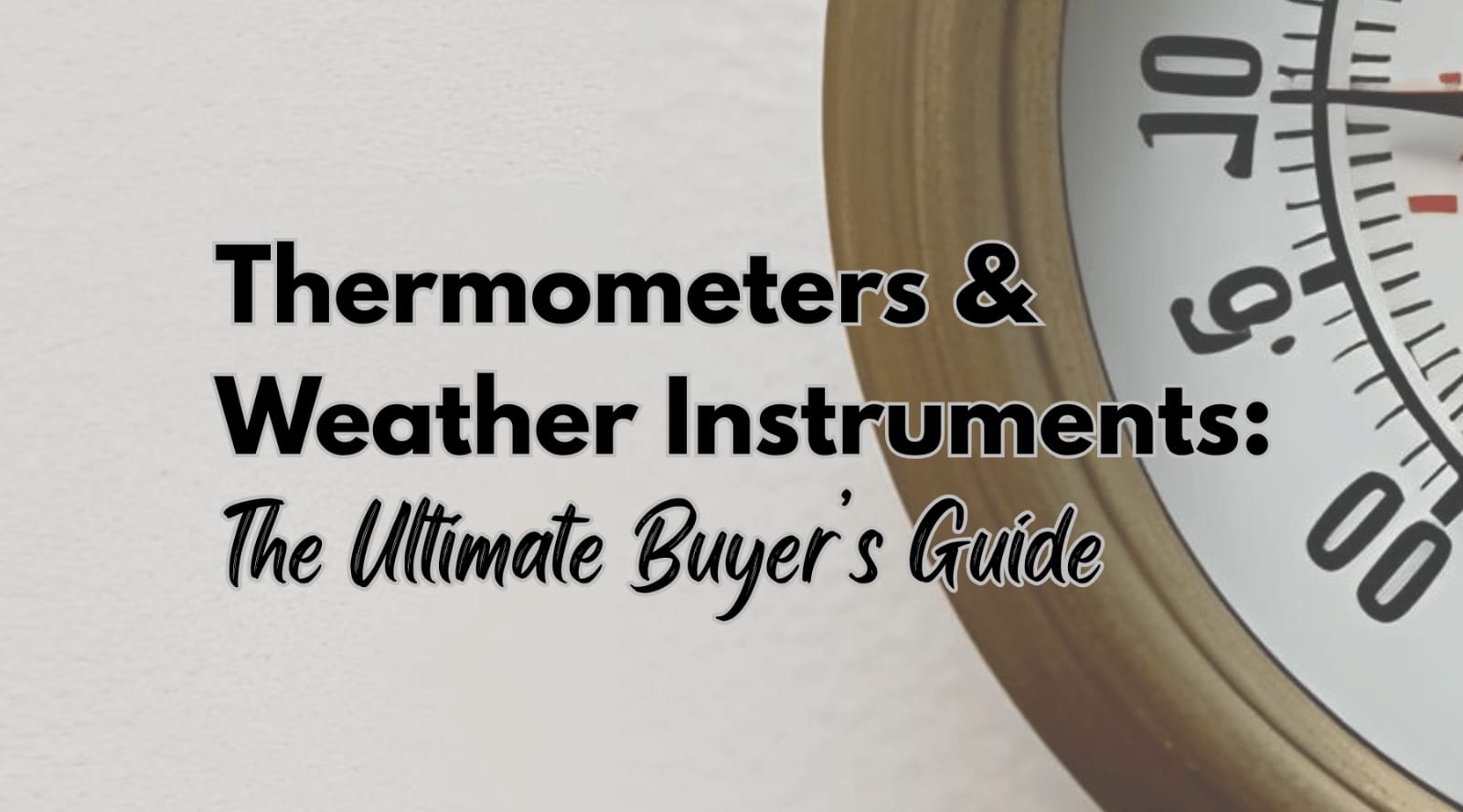(866)223-5699
(866)223-5699

Thermometers are the unsung heroes of our daily lives. From checking if you have a fever to figuring out how cold it is outside, these handy weather instruments measure temperature and keep us informed. But not all thermometers are created equal – there are several types, each suited for different uses. In this guide, we’ll break down what thermometers are, why they matter, and the main types available. We’ll also highlight who typically uses each kind (whether it’s home users, weather enthusiasts, farmers, healthcare professionals, or industrial workers) and suggest some product examples. By the end, you’ll have a clear idea of which thermometer fits your needs. Let’s dive in!
A thermometer is an instrument designed to measure temperature – basically how hot or cold something is. Temperature affects everything from weather forecasting and cooking to our health and industrial processes. Having accurate temperature readings is important: it helps meteorologists predict weather changes, tells farmers when to protect crops from frost, and lets doctors know if you have a fever.
There isn’t just one kind of thermometer. Over the years, people have invented various types to measure temperature in different ways. Some are analog, using physical materials like liquids or metals that expand with heat. Others are digital, using electronic sensors. Some are non-contact thermometers that measure infrared radiation from a distance, and others are integrated into full-featured weather stations. Let’s explore each type in detail.

Digital thermometers use electronic sensors to display temperature on a screen. They are accurate, fast, and convenient, making them a top choice for many consumers and professionals alike.
Common Uses: Home temperature monitoring, healthcare, cooking, weather observation.
Who Uses Them: Families, healthcare professionals, hobbyists, and meteorologists.
Featured Product: La Crosse Technology Wireless Thermometer.

Analog thermometers use physical changes in liquids or metals to show temperature. They are battery-free and often used outdoors or decoratively.
Common Uses: Outdoor garden use, indoor decor, education.
Who Uses Them: Gardeners, schools, traditionalists.
Featured Product: Weems & Plath Endurance II Thermometer.

Infrared thermometers measure surface temperatures without touching the object. They are fast and ideal for checking equipment, food surfaces, or HVAC systems.
Common Uses: Cooking, automotive, HVAC, medical screenings.
Who Uses Them: Chefs, electricians, healthcare workers, mechanics.
Featured Product: FLIR TG54 Spot IR Thermometer.

These thermometers use coiled metal strips that expand at different rates to move a needle across a dial. Common in ovens and industrial settings.
Common Uses: Ovens, refrigerators, outdoor walls, grills.
Who Uses Them: Home cooks, HVAC techs, industrial workers.
Featured Product: La Crosse 10" Bi-Metal Thermometer & Hygrometer.

These classic thermometers use liquid expansion in a sealed tube to indicate temperature. Safer alcohol-based versions are common now.
Common Uses: Education, outdoor decor, candy-making.
Who Uses Them: Schools, traditionalists, scientists.
Featured Product: La Crosse Galileo Thermometer.

These are integrated into home or professional weather stations and usually feature multiple sensors to measure temperature, humidity, and more.
Common Uses: Home weather tracking, gardening, smart homes.
Who Uses Them: Weather enthusiasts, gardeners, educators.
Featured Product: Davis Instruments Vantage Vue Weather Station.
Designed for extreme environments and precision monitoring. Includes thermocouples, RTDs, and industrial-grade bimetal dials.
Common Uses: Manufacturing, food safety, labs, HVAC.
Who Uses Them: Engineers, technicians, scientists.
Featured Product: REED C-370 RTD Thermometer.

Whether you're tracking the weather, monitoring health, or ensuring food safety, there's a thermometer for every need. Choose wisely based on where and how you'll use it. And if you're looking to upgrade your thermometer or build out your weather station, check out the full range at WeatherScientific.com.
Leave a comment